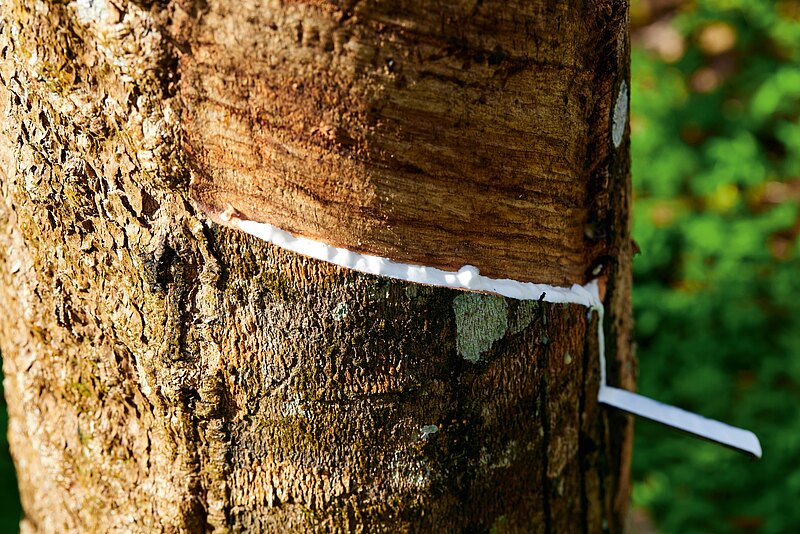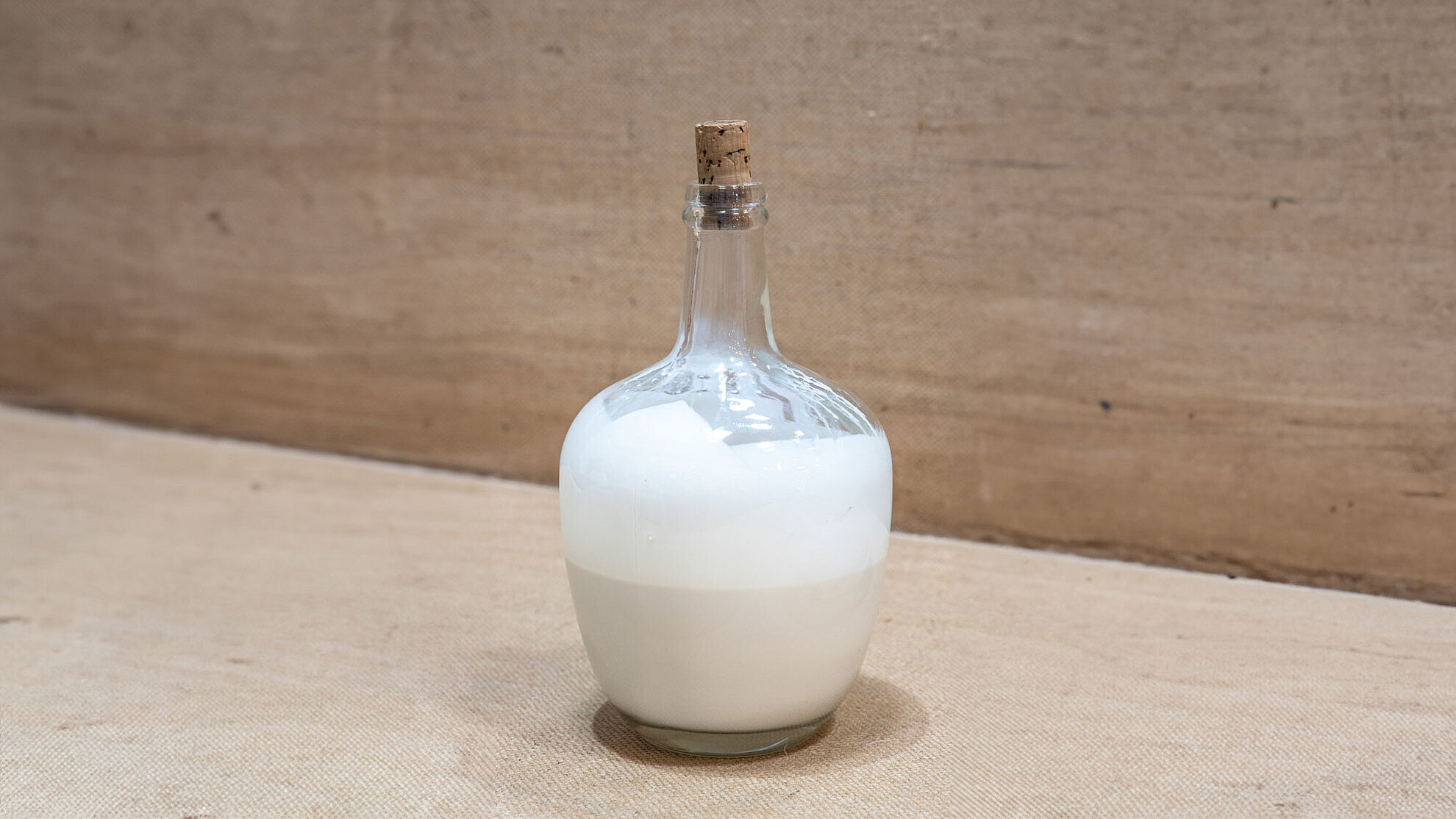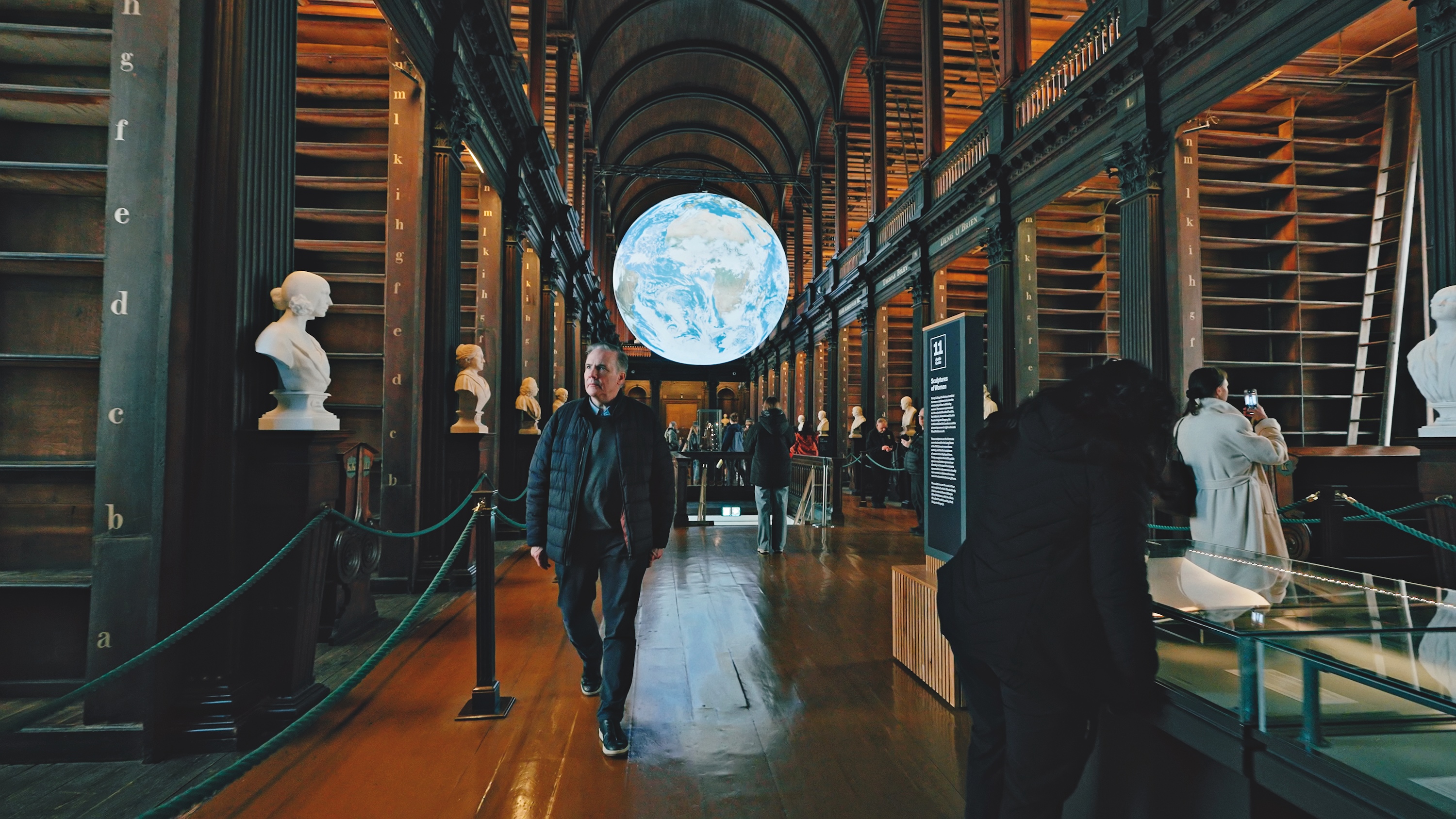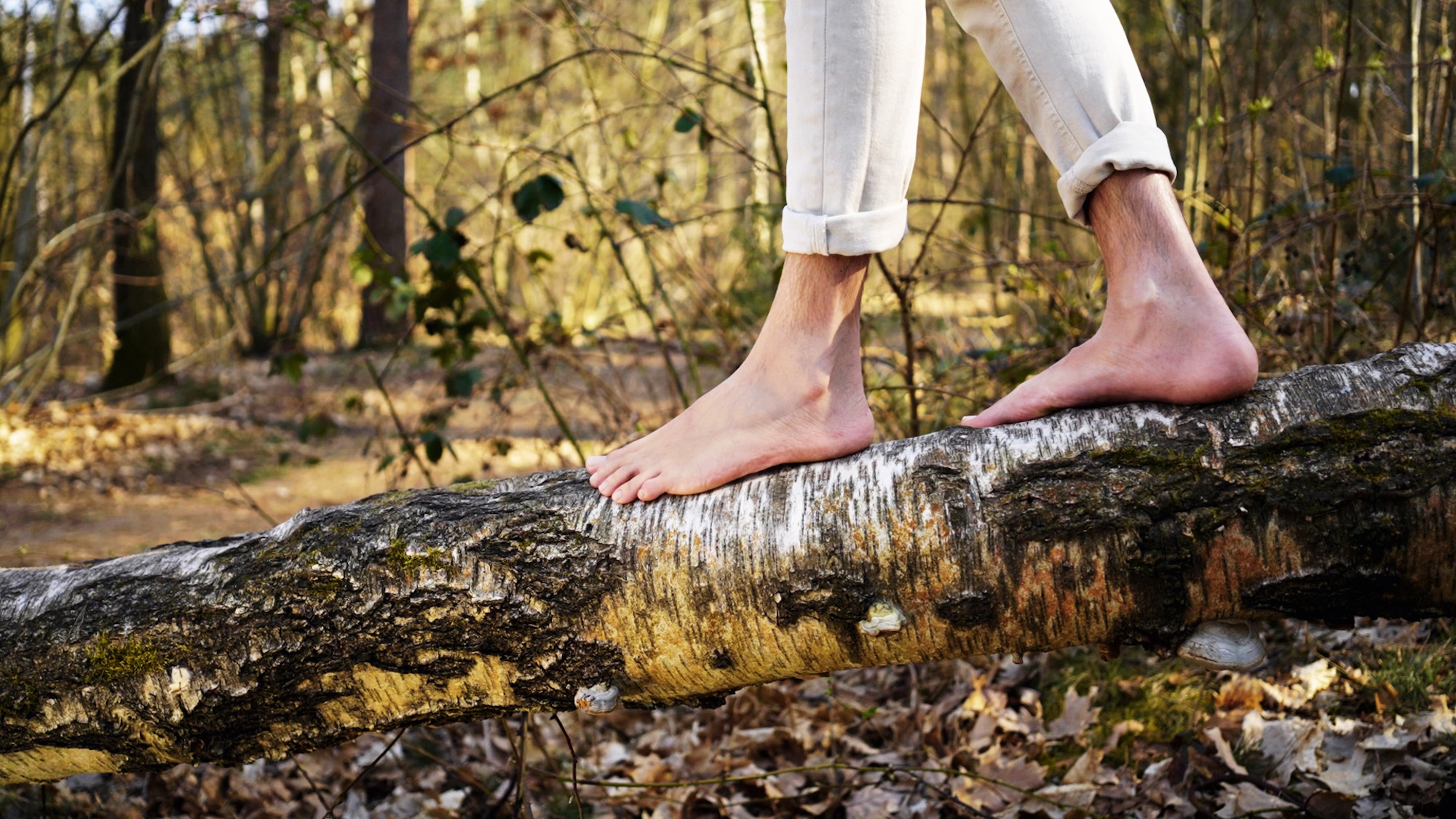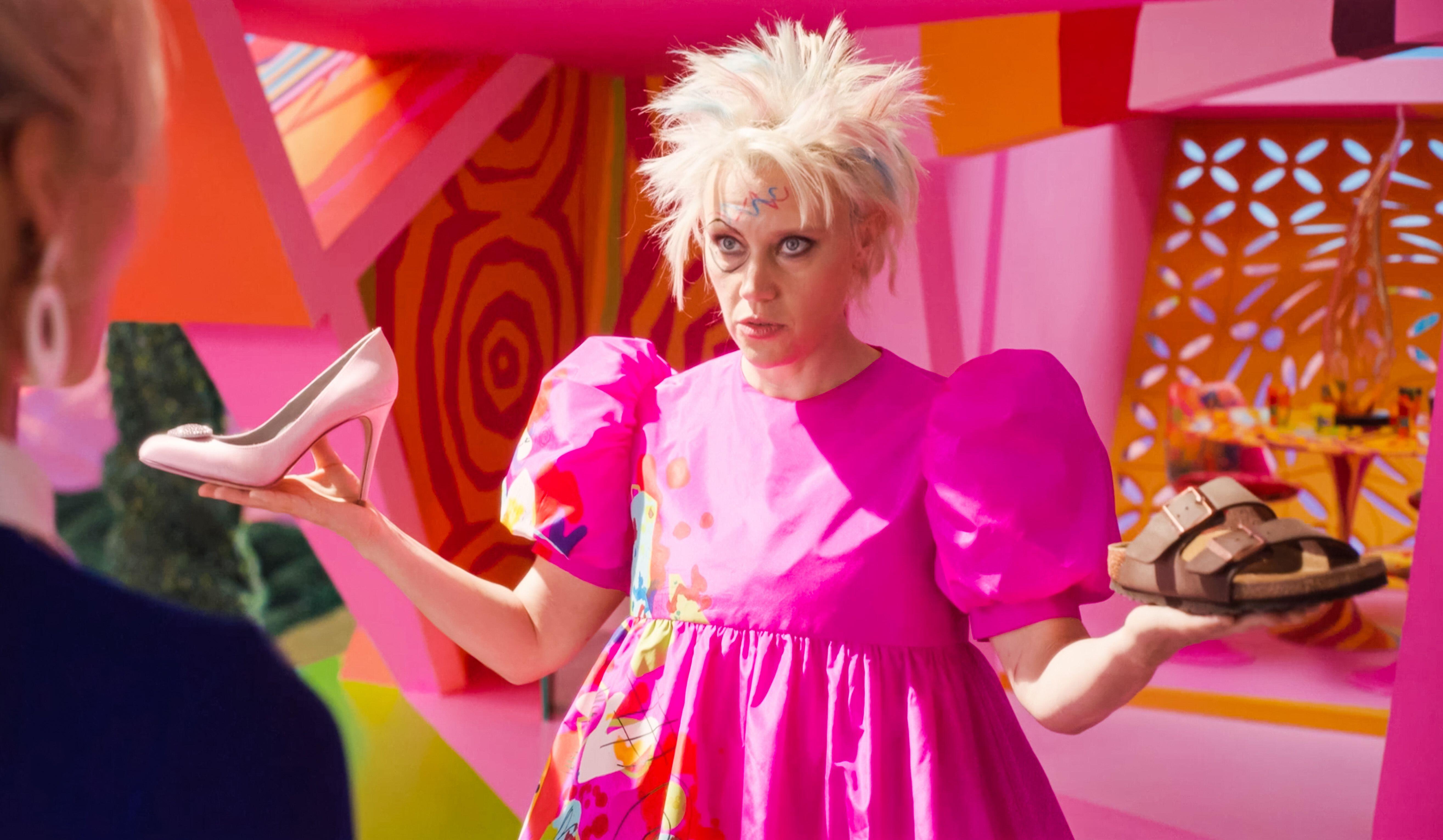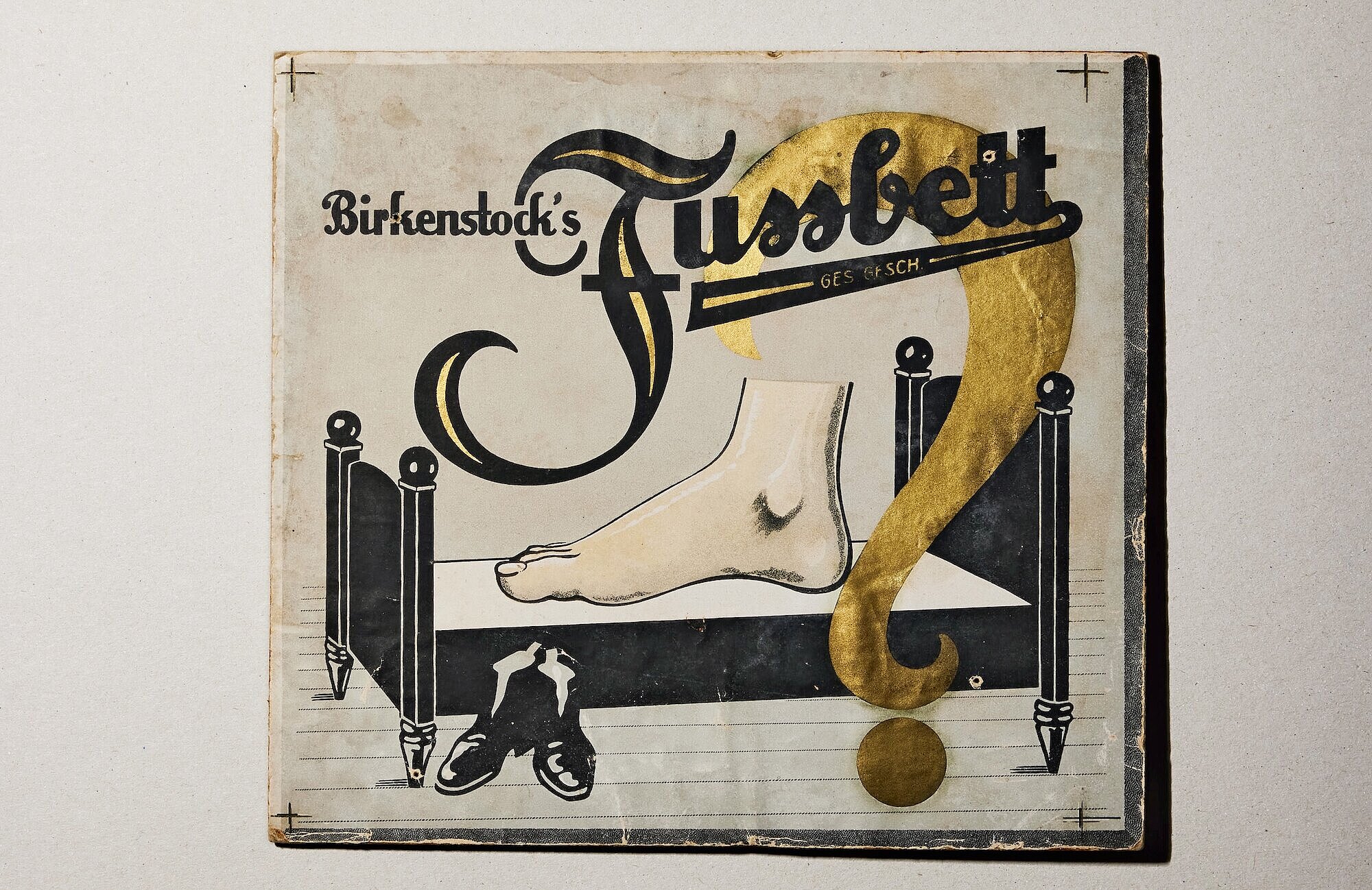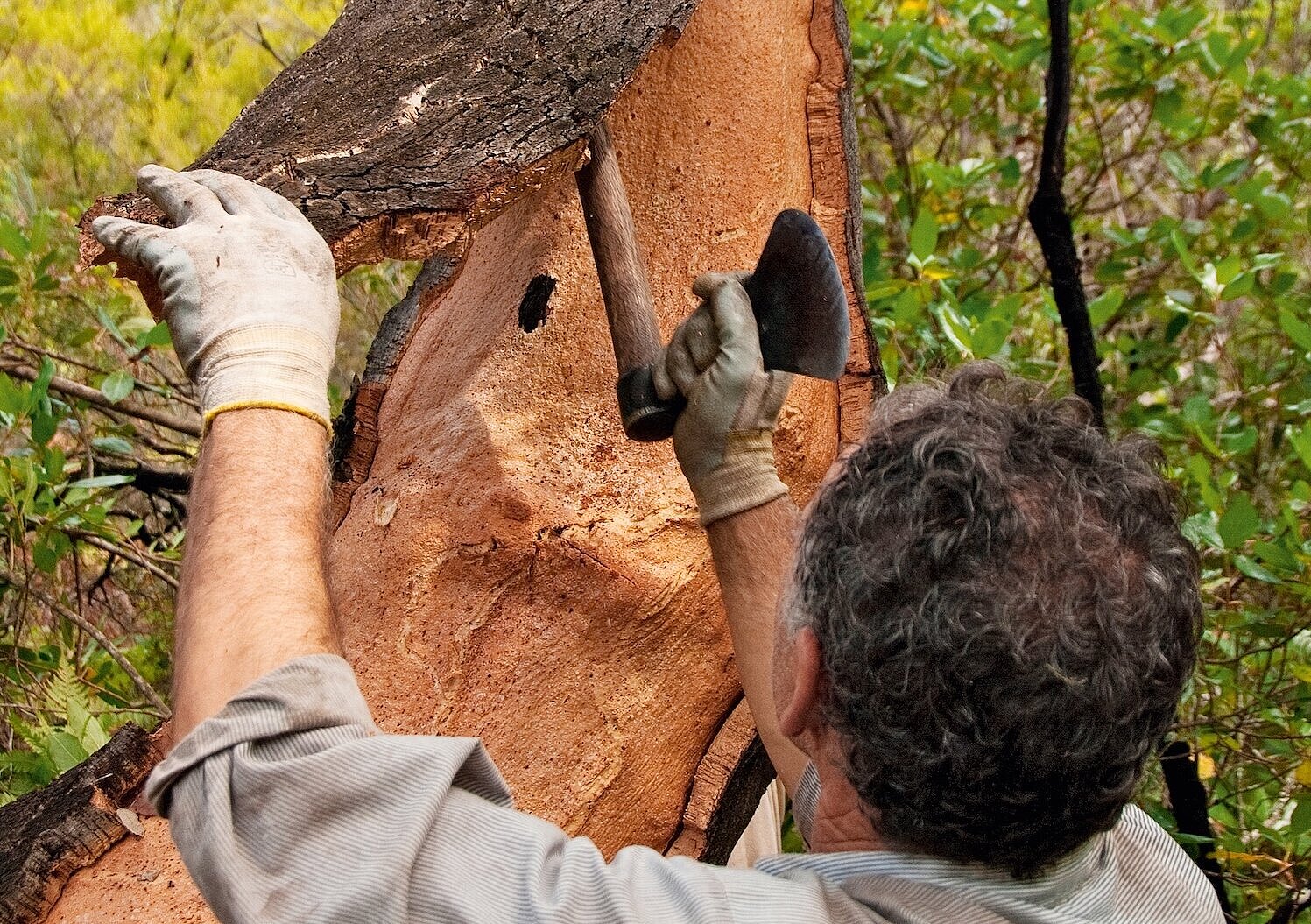Natural latex is, with no doubt, one of the most interesting raw materials we use to manufacture our products. This column is sponsored by Lutz Glahn, who manages our raw materials procurement in his capacity as Vice President Global Sourcing.
Natural latex: From the first basketball game to our footbed
The Birkenstocks you’re wearing wouldn’t be so comfortable if Christopher Colombus hadn’t landed in America after crossing the Atlantic on the Santa Maria. No kidding… Our footbed is made entirely of cork and natural latex, which serves as a primary binder. Interestingly, the Genoese navigator is credited with the “discovery” of natural rubber latex.
When he returned to the New World for the second time in 1493, he noticed that the natives of Haiti were playing with a ball made from tree gum. This bouncing ball, which the locals called “caw-uchu” or “weeping wood”, was also used by the ancient Mayans who threw it through a “hoop” made of rubber. It was the earliest form of a game which later became known as basketball. Back from America, Columbus brought rubber tree specimens to Europe.
A major breakthrough came in 1770, when chemist Joseph Priestley noticed that lines drawn with a pencil could be removed with rubber. This was the origin of the name “rubber”, which is derived from the verb “to rub out”. In 1839, Charles Goodyear discovered that the properties of rubber could be greatly improved by heating it with a small percentage of sulphur. This process is known as vulcanization. When rubber is vulcanized, it retains its elasticity but becomes stronger and less sticky. Vulcanized rubber could be strenghtened by adding other materials like soot. Goodyear, who had discovered the process of vulcanization by accident when a mixture of rubber and sulphur landed on the stove in his workshop, gave birth to the tire industry.
Following his discovery, rubber trees were planted on a large scale in countries all over the tropics. Originally, rubber was made from the latex of Ficus elestica, a type of fig tree. Today, most natural rubber (also known as India rubber) comes from the natural latex of the Pará rubber tree (Hevea brasiliensis), a plant native to the Amazon but now grown commercially in equatorial regions all around the world.
Latex in plants is a complex mixture of proteins, alkaloids, starches, sugars, oils, tannins, resins, and gums that coagulates when exposed to air. Plants use latex to seal themselves after injury, thereby protecting themselves against bacteria and fungi. This delicate natural material, also known as “rubber milk” because of its color and consistency, has a much better energy balance than synthetic latex, which is obtained from crude oil, and it’s also free of pollutants such as solvents and CFCs. In addition, natural latex has very beneficial natural properties, such as a high elasticity and superior breathability.
Latex is harvested from the trees by slitting the bark and allowing the “milk” to seep out for collection, a process similar to tapping maple trees for sap. Tapping was done only at night when the output of latex is higher. A tapper takes about 15 seconds to tap a tree and can tap up to 500 trees per night. The “milk” is then collected in small buckets in the morning.
A rubber tree provides up to 300 grams of latex per night. Usually, it is tapped every two to three days, between mid-April and the end of January. This process first occurs when the trees are 6 years old. From then on, a rubber tree can produce latex for 17 to 25 years.
The “milk”, which contains about 33% rubber and 67% water, is processed in a factory. Centrifuges reduce the water content to 38% and increase the rubber content to 60%. The latex is then exported worldwide as a liquid.
The latex that Birkenstock uses for its footbeds arrives by ship in Hamburg and in Terneuzen in the Netherlands from plantations based in Thailand, Vietnam and Guatemala. Every week, five trucks make the trip to our factories in Görlitz and Steinau, where the natural latex is stored in large tanks at room temperature. The “rubber milk” is then blended with a mixture of soft and coarse cork granules. The doughy mass is baked with two layers of jute and a top layer of suede. The substance is hardened by vulcanization and retains the positive properties of the natural material.
Latex is one of the few raw materials we source from outside Europe. As a respected multi-generational company with a family tradition dating back to 1774, we are aware of our responsibility to our customers and our employees. We have established a set of ethical and social rules to guide our business. In order to meet the requirements of the German Act on Corporate Due Diligence Obligations in Supply Chains, we have ensured comprehensive due diligence measures for human rights and (selected) environmental issues. We expect our suppliers to act according to the same principles. That’s why we select our partners with great care and conduct extensive research before adding them to our portfolio.
Our experts have recently visited our suppliers’ rubber plantations and factories in Thailand and Guatemala to assess working conditions and the quality of life for workers and their families.
To ensure the transparency in our supply chain, we decided to join the FSC Chain of Custody in 2021. The Forest Stewardship Council (FSC) is an international, non-governmental organization that promotes the responsible management of the world’s forests. Since its foundation in 1994, FSC has become the world’s most respected and widely used forest certification system. Its certification confirms that the forest is managed in a way that preserves biodiversity and benefits the lives of local people and workers, while ensuring sustainable economic viability.
Today, more than half of the latex we use is FSC certified and comes from Thailand and Guatemala. We aim to have all our purchases certified in the very near future. Birkenstock consumes less than 1% of the world’s annual production of this 100% natural, renewable raw material. 400,000 rubber trees are used each year to produce the latex needed for our footbeds. Birkenstock seems to owe Christopher Columbus a debt of gratitude.
